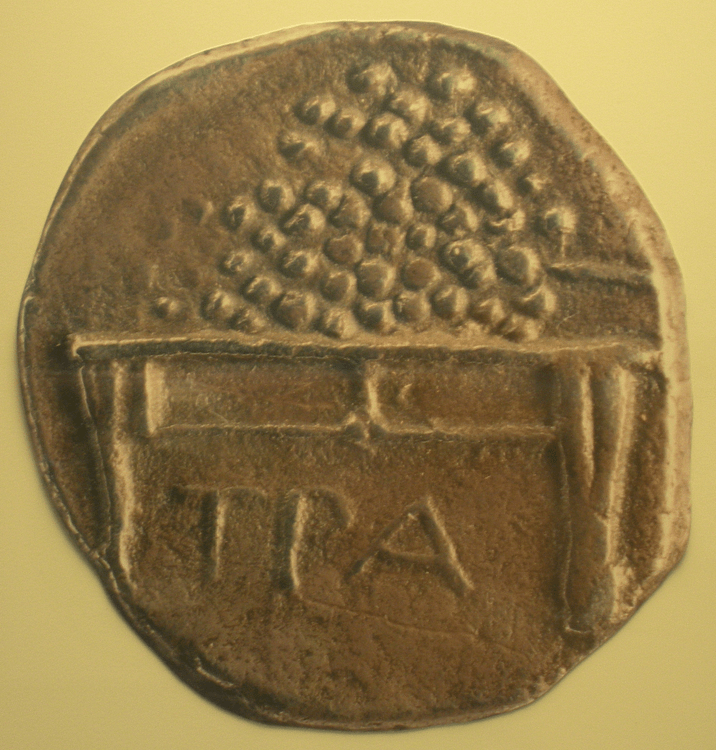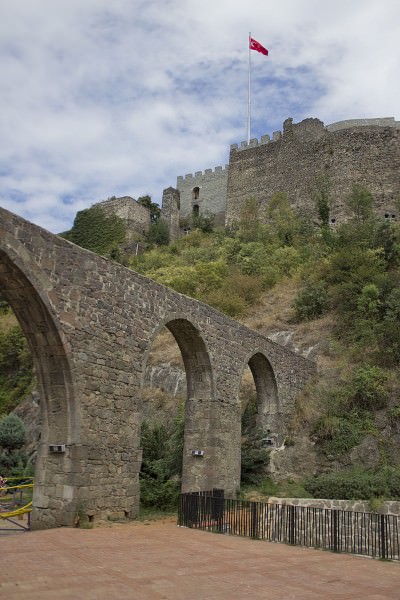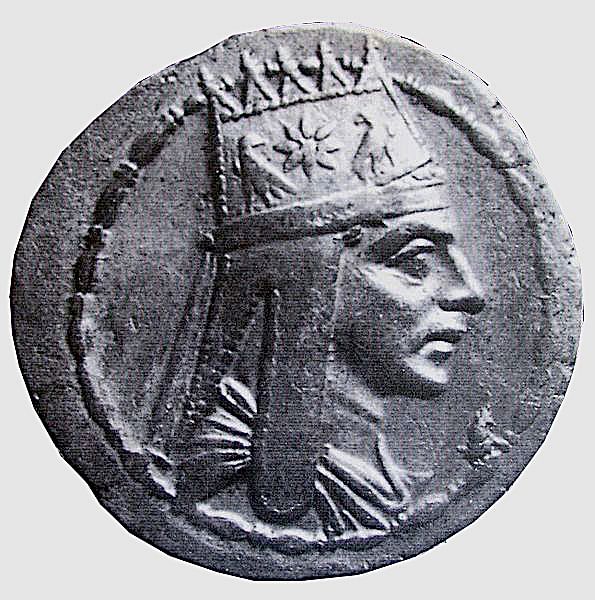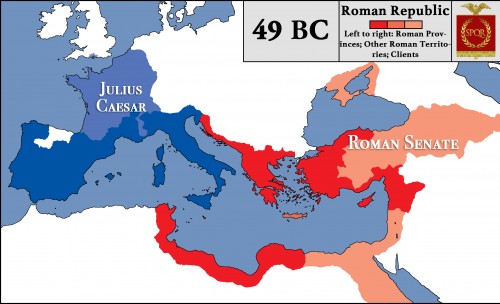Trebizond › Tigranes the Great » Ancient origins
Articles and Definitions › Contents
- Trebizond › Who Was
- Tigranes the Great › Who Was
Ancient civilizations › Historical and archaeological sites
Trebizond › Who Was
Definition and Origins

Trapezus ( Greek : Τραπεζοῦς) or Trebizond was a Greek city on the southern shore of the Black Sea, modern Trabzon.According to the Christian author Eusebius, writing more than a millennium after the event, Trapezus was founded in 756 BCE, in the country that was called Colchis. Its first settlers were from Sinope ( Xenophon, Anabasis, 4.8), a Greek city on the southern shore of the Black Sea, about 400 kilometers to the west. Because this city was a daughter of Miletus, which in turn was believed to be a colony of Athens, the Trapezian scholar Cardinal Bessarion would still boast to be an Athenian in Renaissance times.
If we are to believe Pausanias (Guide to Greece, 8.27.6), there was a second wave of immigrants from the Peloponnese, after the city had been destroyed by the Cimmerians in c. 630 BCE. This story may be a late invention, only meant to explain why there was a town named Trapezus in Arcadia too; on the other hand, this may have been the city's real founding moment, the first one being just a legend.
However this may be, the city was a very important port and appears to have played a pivotal role in trade between Greece and the Iron Age civilizations of Anatolia, especially Urartu. Many metal artifacts must have been shipped to Greece from Trapezus, which may explain why so many pieces of Greek art in the Oriental Style resemble Urartian objects.
The city was not to become wealthy because of its agricultural produce. Its acropolis is on an outcrop of the Paryadres, a mountain range parallel to the coastline; there's almost no flat land that might have been suitable for agriculture. However, there's a good port (the only one east of Amisus), and there are several roads across the Paryadres mountains.
The mountain slopes were covered with forests, allowing the Trapezians to build ships and produce wine and honey. Tuna fish is mentioned by Strabo, a geographer from nearby Amasia (Geography, 7.6.2). The Chalybes, as the Greeks called the mountain tribes, were well-known for producing iron ore. Later, we hear about other tribes living in the mountains, the Mossynoeci and Drilae.
PERSIANS, GREEKS, & MERCENARIES
Persian influence must have been real in the late sixth century BCE, at least theoretically, because the southern shore of the Black Sea is mentioned by Herodotus of Halicarnassus as part of the third and thirteenth tax districts of the Achaemenid Empire. Later, the city may have been one of the towns of the Delian League.
In the early spring of 400 BCE, the remains of the army of the Persian usurper Cyrus the Younger, which had returned from their ill-fated expedition against Artaxerxes II Mnemon, arrived in Trapezus; the survivors sacrificed to the Greek gods. One of its commanders, Xenophon, offers some information about the city in his Anabasis, which he calls "populous" (4.8.22). The army supported the Trapezians, who had a quarrel with both the Drilae (5.2) and the Mossynoeci (5.4).
Several years later, in 368/367 BCE, people from Arcadian Trapezus who were not willing to move to newly-founded Megalopolis, migrated to Pontic Trapezus (Pausanias, Guide to Greece, 8.2.7). Another generation later, the city was allotted to Eumenes of Cardia, one of the successors of Alexander the Great (Arrian, Events after Alexander ).
IN THE FIRST HALF OF THE 1ST CENTURY BCE, THE CITY WAS PART OF THE PONTIC KINGDOM OF MITHRADATES VI, AND ITS PORT WAS USED BY THE FLEET OF PONTUS.
ROMAN TRAPEZUS
In the first half of the first century BCE, the city was part of the Pontic kingdom of Mithradates VI, and its port was used by the fleet of Pontus. Nevertheless, it soon joined the Romans, and was offered by Pompey the Great to King Deiotares of Galatia.In the first century CE, the Romans later recognized Trapezus as a free city ( Pliny the Elder, Natural History, 6.4). According to later legends, Saint Andrew was to explain Christianity to the Trapezians.
The conflict between Rome and the Parthians was mainly fought in Syria, but the strategic importance of Armenia made the Romans occupy the greater part of Anatolia. This made Trapezus an important city, because it was one of the few ports on the northern coast of this area. It was a crucial node between the limes (border zones) along the Rhine and the limes along the Euphrates.
During the reign of Nero (53-68 CE), the city was in use as a supply base for the Armenian campaign of Corbulo (Tacitus, Annals, 13.39); its strategic importance was, in the Year of the Four Emperors, recognized by Anicetus, one of the supporters of Vitellius (Tacitus, Histories, 3.47); and Vespasian developed the area, building a road across the Zigana Pass, which was defended by the legionary fortress at Satala, base of XVI Flavia and, later, XV Apollinaris. Finally, it was Hadrian who improved the port (Arrian, Periplus). The remains have been identified.
In the crisis of 193 CE, Trapezus, now a flourishing city, supported Pescennius Niger, and was consequently punished by the victor of the civil war, Septimius Severus. The city remained prosperous and attracted attacks by the Visigoths (in 257 CE) and Sasanian Persians (in 258 CE) during the reign of Valerian. A double wall and a garrison of 10,000 additional soldiers were insufficient to prevent its capture, according to Zosimus.

Aqueduct & Fortifications of Trebizond
TRAPEZUS IN LATE ANTIQUITY
The city walls were repaired by Diocletian (284-305 CE), and Trapezus received a new garrison: the First Legion Pontica.This appears to have happened in the first decade of Diocletian's rule. The unit is mentioned in a dedication (CIL, 3, 6746) that can be dated to 297-305 CE and was still in this town when the Notitia Dignitatum was composed, an early 5th century CE list of Roman magistracies and military units.
The reign of Diocletian and Galerius, his caesar, witnessed ferocious persecutions of the Christians. In Trapezus, Eugenius, Canidius, Valerian, and Aquila were tortured to death. About the latter, we know that he destroyed a statue of Mithras on a hill overlooking the city, and that he became the patron saint of Trapezus. Another sanctuary of Mithras was to serve as crypt for the church of Panaghia Theoskepastos. The driving force of the Christian fight against the cult of Mithras had been Gregory Thaumaturgus from nearby Neocaesarea.
During the reign of Constantine, the city belonged to the Diocese Oriens. It was represented by its bishop, Domnus, during the Council of Nicaea. We know that Prince Hannibalian founded a church dedicated to the Virgin; not much later, Ammianus Marcellinus calls Trapezus "a celebrated city" (Roman History, 22.8.16). Perhaps the Soumela Monastery, south of the city, was built in this age, although it may a bit younger.
During the reign of Justinian, the aqueduct was improved (Procopius, Buildings, 3.7) and named after the martyr Eugenius.An inscription proves that the walls were repaired as well. There were also repairs to the Soumela Monastery.
BYZANTINE TRAPEZUS
Under the Byzantine emperors, Trapezus suffered decline, although it was one of the places where Muslim merchants arrived to do business with Byzantine traders. From 824 CE, it was the capital of the theme (military district) of Chaldia.
After the knights of the Fourth Crusade had captured Constantinople, however, the imperial dynasty of Byzantium, the Comnenes, escaped to Trapezus, making it the capital of the Empire of Trebizond. It surrendered to the Ottomans in 1461 CE, marking the end of the Byzantine Empire.
Little remains of ancient and medieval Trapezus, except for the ruin of the palace of the Comnenes and the medieval church of Hagia Sophia, the answer of Trebizond to the church with the same name in Constantinople. After the Ottoman take-over, Trapezian artists and scholars like Cardinal Bessarion traveled to Italy, taking with them precious manuscripts. The ancient city was, in this way, an important connection between the ancient culture, as continued in Byzantine art and scholarship, and the European Renaissance.
MAP
Tigranes the Great › Who Was
Definition and Origins

Tigranes II or Tigranes the Great ruled as the king of Armenia from c. 95 to c. 56 BCE. Expanding in all directions, at its peak, Tigranes' Armenian Empire stretched from the Black Sea to the Mediterranean. Not before or since would Armenians control such a huge swathe of Asia. Tigranes would only be checked once his kingdom became enmeshed in the ambitions of the two regional superpowers, Parthia and Rome, when his alliance with Mithridates VI, king of Pontus, proved his undoing.
THE ARTAXIAD DYNASTY
The Artaxiad (Artashesian) dynasty had replaced the Orontid dynasty and ruled ancient Armenia from c. 200 BCE to the first decade of the 1st century CE. Founded by Artaxias I (rc 200 - c. 160 BCE), the dynasty would ensure Armenia enjoyed a sustained period of prosperity and regional importance and no one would contribute more than their greatest king Tigranes II, widely considered the most important and successful ruler in Armenia's entire history.
SUCCESSION
After a rather dim period for the historical record of Armenia, a shining light suddenly arrives on the scene with a mass of documentation covering the reign of Tigranes II (aka Tigran II). There is the caveat that most sources, and all contemporary ones, are from the Romans and so they tend to be more than a little biased against one of their more serious foes in the east.Later sources help redress the balance but these can also have their problems in their sometimes obvious selection and omission of events for patriotic reasons.
FROM 85 BCE TIGRANES RATHER GRANDLY BEGAN CALLING HIMSELF THE “KING OF KINGS”.
Tigranes was put upon the throne of Armenia by the Parthians after his uncle, the Armenian king Artavasdes I, had been forced to send Tigranes as a hostage to the Parthians following his military defeat to that state. When his father Tigranes I died c. 95 BCE, Tigranes was sent back to Armenia to take his place on the throne. The new king had to cede the “Seventy Valleys” to the Parthians (a territory probably towards modern Azerbaijan) but he soon proved to be anything but a compliant client ruler.
EXPANDING THE EMPIRE
Tigranes was able to take advantage of the crumbling of the Seleucid Empire as well as the Parthians being distracted by the still chaotic aftermath of Mithridates II's death in 91 BCE and invasions on their eastern borders. The Armenian monarch could thus set about expanding his own kingdom even further. First, he annexed the other part of traditional Armenia, the kingdom of Sophene in 94 BCE. With formidable siege engines and units of heavily-armoured cavalry, he then re-took the “Seventy Valleys” and went on an extended spree of conquest from 88 to 85 BCE. He conquered Cappadocia, Adiabene, Gordyene, Media Atropatene, Phoenicia and parts of Cilicia and Syria, including Antioch. The latter city invited him to be their king and subsequently minted silver tetradrachm coins with images of Tigranes wearing his eastern tiara and, on the reverse, a woman with a turreted crown and holding the palm of victory. The Armenian king even sacked Ecbatana, the Parthian royal summer residence in 87 BCE while the Parthians were struggling to deal with invading northern nomads.

Empire of Tigranes the Great
Another policy of Tigranes', besides conquest, was to improve trade relations with certain states, notably Babylonia. Trade contacts were set up with the Skenite Arabs, through whose territory goods could be exchanged with Babylon. This was also the reason why Tigranes took no risks and installed his brother as ruler of Nisibis which controlled trade from Mesopotamia to the west.
KING OF KINGS
From 85 BCE, having acquired a decent-sized empire, Tigranes rather grandly began calling himself the “King of Kings” (Persian: shahanshah ), although the title is further evidence that he left conquered monarchs to rule as vassals. Indeed, the Greek writer Plutarch (c. 45 - c. 125 CE) famously noted that Tigranes was always followed around by an entourage of four kings who acted as his servants. This comment may well have been based on a misunderstanding and the four men in question could well have been close counsellors who were also kings of their own respective regions but served the Armenian king as viceroys. Within the empire, conquered states might have kept their political apparatus but they were still obliged to pay tribute and contribute to Tigranes' army. Further, populations were relocated to reduce dissension and increase loyalty wherever required. Tigranes' title of King of Kings was then well justified and he made sure he looked the part as the historian VM Kurkjian here summarises:
Tigranes' public appearances were spectacular. He displayed all the pomp and magnificence becoming to a successor of Darius or Xerxes. Theoretically an equal of the gods, he clothed himself in a tunic striped in white and purple, and a mantle entirely purple. He always wore everywhere (even when hunting) a tiara of precious stones. Four of his vassal kings stood about his throne, and when he rode forth on horseback, they ran on foot before and beside him. (64)
THE CAPITAL TIGRANOCERTA HAD SUCH AMENITIES AS A GREEK THEATRE, HUNTING PARKS & PLEASURE GARDENS.
Tigranes was noted as an admirer of Greek culture and the capital city he founded in 83 BCE, Tigranocerta (aka Tigranakert, meaning “Tigranes' foundation” but of uncertain location), was famously Hellenistic in its architecture. The city had impressive fortifications with the walls reaching a height of 22 metres and incorporating stables, such was their thickness. There were also such amenities as a Greek theatre, hunting parks and pleasure gardens. Tigranes was said to have forcibly relocated (a traditional figure of) 300,000 people to the new city, most of them from Cappadocia. Reflecting the cosmopolitan nature of the city, and the empire in general, the Greek language was likely used, along with Persian and Aramaic, as the language of the nobility and administration while commoners spoke Armenian. Persian elements continued to be an important part of the Armenian cultural mix, too, especially in the area of religion and the formalities of the court such as titles and dress.
MITHRIDATES VI & ROME
Tigranes then made his major political blunder and allied himself with Mithridates VI, the king of Pontus (r. 120-63 BCE) who was a great enemy of Rome with whom he had been waging war for over two decades. Admittedly, Tigranes had been married to Mithdridates' daughter Cleopatra since 92 BCE and, really, it seemed that whichever side Armenia chose - Rome or Parthia - the small kingdom caught between these great empires would always come off second best.

Mithridates_VI
The Roman Republic saw the danger of such an alliance between the two regional powers, a suspicion which was confirmed by a joint Tigranes-Mithridates campaign against the Roman client state of Cappadoccia. The Romans responded by attacking Pontus and when Mithridates fled to the court of Tigranes in 70 BCE they asked for the former to be handed over. When Tigranes refused, the Romans invaded Armenia. Tigranes was defeated by a Roman army commanded by the general Licinius Lucullus, Tigranocerta was besieged and, after the betrayal of the Greek garrison, captured in 69 BCE. The Armenian king was, consequently, forced to abandon his conquests. The conquering Romans were amazed at the wealth of Tigranocerta, and that after Tigranes had already managed to spirit away his royal treasury.
Lucullus then moved to attack the important city of Artaxata (Artasat) but with winter coming on, his supply line dangerously thin and exposed, and even a mutiny amongst his own troops, the Roman general was forced to withdraw. Tigranes' army harried the retreating Romans using guerrilla tactics and although Lucullus captured Nisibis, he was recalled to Rome in 67 BCE. The respite would not last for long as the Roman Senate proved determined to stamp its authority on the region once and for all.
In 66 BCE another Roman army headed eastwards, this time led by Pompey the Great who had already won great acclaim.He had also celebrated two Roman triumphs; Pontus, Parthia and Armenia seemed as good a place as any to grab his third and a handsome load of booty to go with it. First, he attacked Pontus and sent Mithridates fleeing to the Black Sea. Next was Armenia's turn and here he was aided by Tigranes' traitorous third son, Tigranes the Younger.

Roman Republic at the Beginning of Caesar's Civil War
Artaxata (now capital after Tigranocerta's demise) was attacked and, although it had resisted a Parthian siege the year before, quickly surrendered. Perhaps Tigranes did not want to see a repeat of the destruction at Tigranocerta and so there may not have been much actual fighting. Tigranes was now in old age and he seems to have bought off Pompey with the vast wealth he had been accumulating over a lifetime. Roman writers record that the Armenian king gave (or was made to give) 6,000 talents of silver to Pompey, 10,000 drachmas to each military tribune, 1000 drachmas for each centurion and 50 for each legionary. In these agreeable circumstances, Tigranes was permitted to retain the heartland of his kingdom trimmed of those territories he had acquired through conquest and with Sophene being given to his traitorous son - who incidentally got his comeuppance when he later insulted Pompey and so was marched to Rome for display in the general's third triumph there.
Armenia was, thus, made into a Roman protectorate but it is debatable if the empire of Tigranes, made up of such disparate and forcibly relocated populations and which was so loosely joined via tribute and coercion without much political apparatus, would have survived very long even without Roman interference. Henceforth, the Armenian state, although officially a friend and ally of the Romans, remained strategically important in the region and so was still a bone of contention between Rome and Parthia (and its successor, Sasanid Persia ). Tigranes continued to rule most of Armenia quietly enough as a vassal state of the Roman Empire, acting as a useful buffer to the Parthians until his death c. 56 BCE aged around 85.
THE FALL OF THE ARTAXIADS
Tigranes was succeeded by his son, Artavasdes II (rc 56 - c. 34 BCE) but the wheels were already coming off the Artaxiad success train. The Roman general Marcus Licinius Crassus obliged Artavasdes to support his disastrous campaign against the Parthians in 53 BCE and then, in 36 BCE, the region was again destabilised when yet another Roman general, this time Mark Antony, passed through, and the Armenians were, once more, asked to provide troops. The Romans were defeated again by their nemesis the Parthians. In 34 BCE Antony turned his attention to Armenia, moved against the Artaxiads and took Artavasdes captive to Alexandria where he would later be executed by Queen Cleopatra. There followed a merry go round of changes in sovereign over the next few decades, first a ruler supported by Rome, then by Parthia until the Artaxiad dynasty fell, replaced by the Arsacid (Arshakuni) dynasty and their founder, Vonon (Vonones), who took the throne c. 12 CE.
This article was made possible with generous support from the National Association for Armenian Studies and Researchand the Knights of Vartan Fund for Armenian Studies.
LICENSE:
Article based on information obtained from these sources:with permission from the Website Ancient History Encyclopedia
Content is available under License Creative Commons: Attribution-NonCommercial-ShareAlike 3.0 Unported. CC-BY-NC-SA License